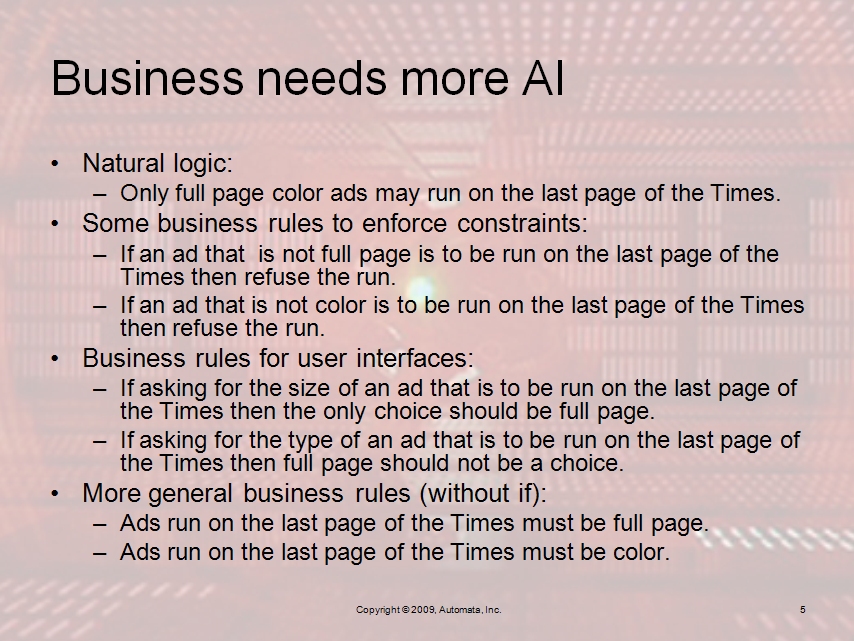Today, I came upon some commentary by a business rule colleague, Carlos Serranos-Morales, of Fair Isaac concerning a presentation I made at the Business Rules Forum. During the presentation I showed some sentences that are beyond the current state of the art in the business rules industry. Generally speaking, these were logical statements that did not use the word “if”. (Note, however, that many of the them could be expressed in SBVR, OMG’s semantics of business vocabulary and rules standard). Carlos argued that such statements should be more precisely articulated within the specific context of a business process.
Here is the slide that triggered the controversy:



